Princeton’s John Hopfield receives Nobel Prize in physics
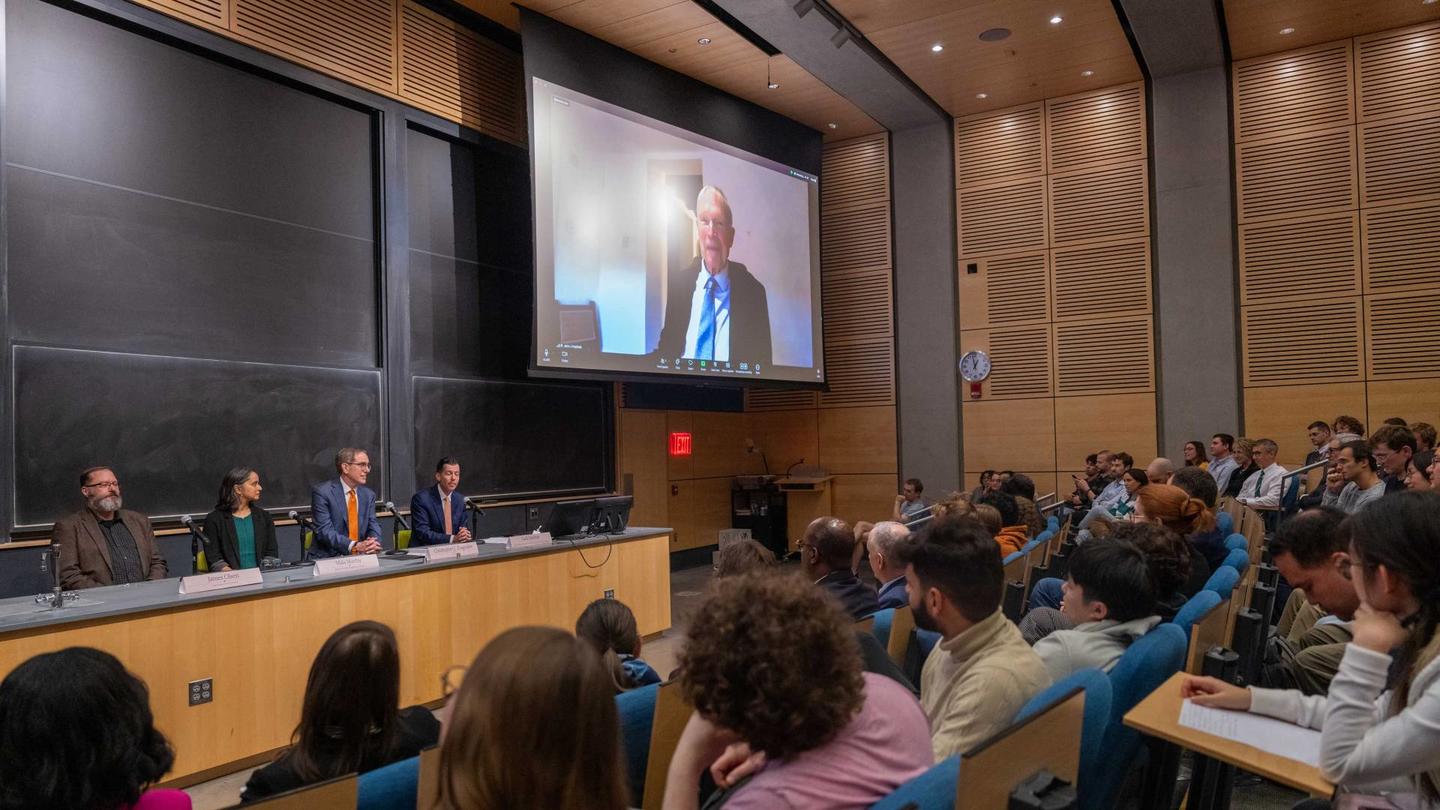
Photo byMatthew Raspanti, Office of Communications
Princeton University professor John Hopfield has been awarded the 2024 Nobel Prize in physics(Link is external) “for foundational discoveries and inventions that enable machine learning with artificial neural networks.”
He shares the prize with Geoffrey E. Hinton of the University of Toronto.
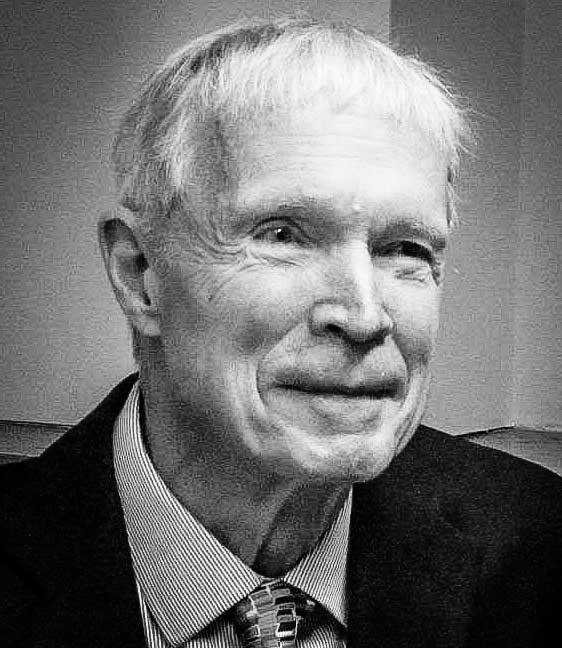 John Hopfield
John HopfieldPhoto courtesy of John Hopfield
“This year’s two Nobel Laureates in Physics have used tools from physics to develop methods that are the foundation of today’s powerful machine learning,” the Royal Swedish Academy of Sciences noted in awarding the prize today.“John Hopfield created an associative memory that can store and reconstruct images and other types of patterns in data,” the academy said. “Geoffrey Hinton invented a method that can autonomously find properties in data, and so perform tasks such as identifying specific elements in pictures.”
Word of the award reached Hopfield at a thatched cottage where he is staying in England. “My wife and I went out to get a flu shot and stopped to get a coffee on the way back home,” he said. They returned to find a flood of congratulatory emails that he described as “astounding” and “heartwarming.”
Hopfield said he was grateful for the opportunity to speak as a Nobel laureate about the vital throughline between basic scientific research and technological innovation that changes people’s lives. “The science which advances technology is the science that gets done for curiosity’s sake much earlier,” he said. This theoretical research, he said, is “the generator of technologies which are so interesting, useful and one relies on to keep making things work better.”
Hopfield is the Howard A. Prior Professor in the Life Sciences, Emeritus, and professor of molecular biology, emeritus. He holds associated faculty status in physics and neuroscience. He taught for 16 years as a professor of physics and helped establish the Princeton Neuroscience Institute.
“John Hopfield’s brilliant scientific career has transcended ordinary disciplinary boundaries, enabling him to make lasting contributions to physics, chemistry, neuroscience, and molecular biology,” said Princeton President Christopher L. Eisgruber. “His pathbreaking research on neural networks, for which he is honored today, exemplifies beautifully the power of curiosity-driven research to advance the frontiers of knowledge and create new tools for addressing some of the world’s most profound challenges.”
A ‘foundational figure’ who ‘fundamentally changed the world’
“John Hopfield was a foundational figure in neuroscience at Princeton,” said Mala Murthy, director of the Princeton Neuroscience Institute.
“Hopfield networks are inspired by the brain and enable machines to store memories and recall them with only partial information,” said Murthy, who is also the Karol and Marnie Marcin ’96 Professor and professor of neuroscience at Princeton. “This work paved the way for the deep learning revolution that has now touched nearly every aspect of society. We are so pleased for John and this deserving honor.”
“We are all delighted for John for this remarkable recognition of his groundbreaking work,” said Bonnie Bassler, chair of Princeton’s Department of Molecular Biology. “John’s discoveries show how research at the interface of disciplinary boundaries can transform our understanding of nature and deliver practical applications that benefit society.
“John combined physics, biology and neuroscience approaches to probe the brain, developing neural networks to explain how the brain recalls memories,” said Bassler, who is also the Squibb Professor in Molecular Biology at Princeton. “Those discoveries led to the creation of artificial neural networks that are now routinely used by machines like smartphones and self-driving cars. The Nobel recognition is truly deserved as John’s contributions have fundamentally changed the world.”
“John is a visionary scientist who transcended boundaries and illuminated the deep connections between theoretical physics and a wide range of phenomena across myriad fields of science,” said James Olsen, Eugene Higgins Professor of Physics and chair of the Department of Physics. “As a member of the physics department in the 1960s and ’70s, John was a passionate teacher and mentor to generations of undergraduate and graduate students inspired by his brilliance and unique approach to studying nature.”
Former Nobel laureate David MacMillan, Princeton’s James S. McDonnell Distinguished University Professor of Chemistry, had these words for Princeton’s newest laureate: “Huge congratulations for a remarkable achievement that has and will continue to benefit all of humankind. Buckle up and enjoy the weird and wonderful ride!”
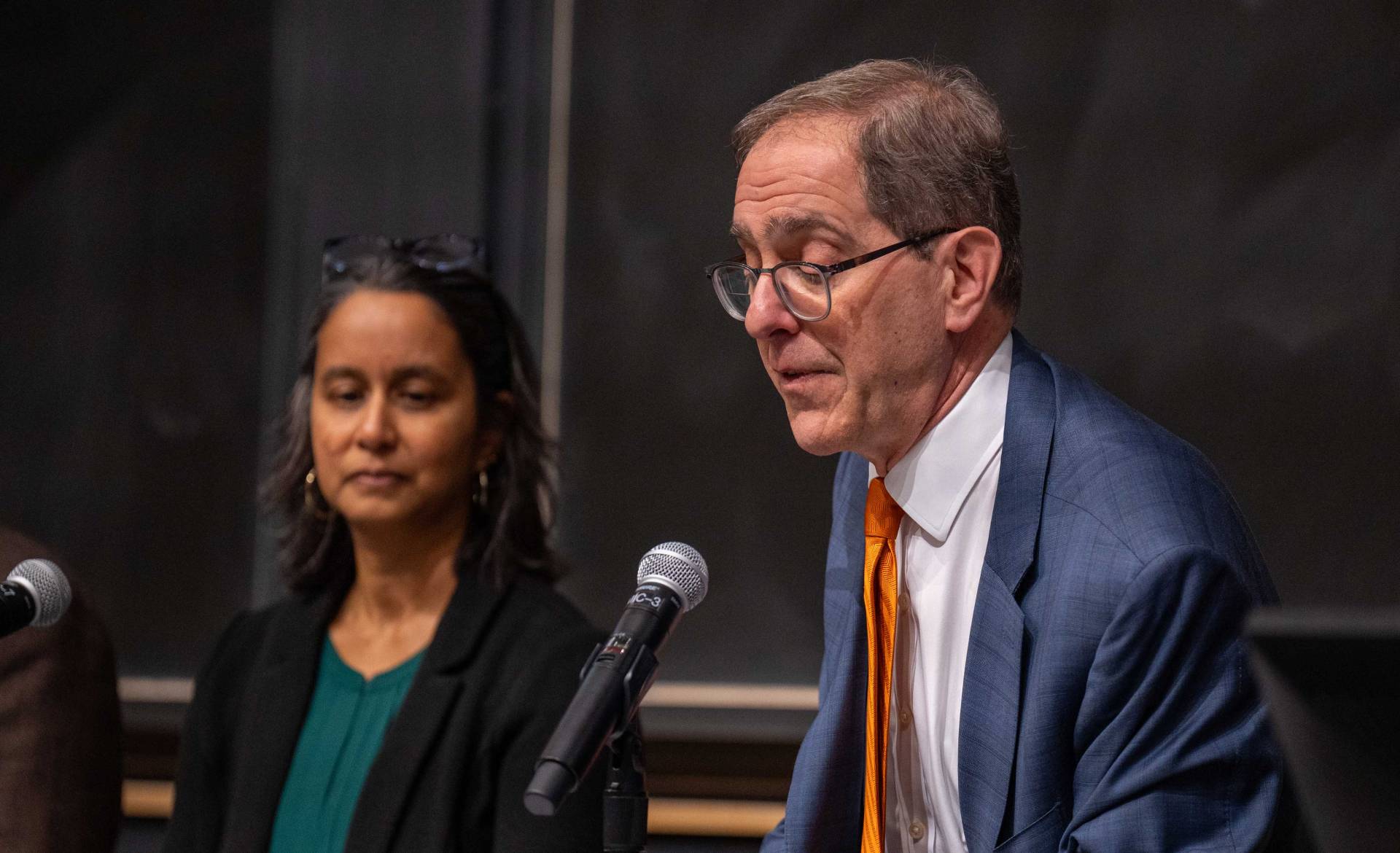 For the Nobel Prizes, “the world stops for a moment and recognizes the special importance of fundamental research and scholarship,” President Christopher L. Eisgruber (right) said in opening remarks honoring Nobel laureate Hopfield at the press conference. Mala Murthy, director of the Princeton Neuroscience Institute, is at left.
For the Nobel Prizes, “the world stops for a moment and recognizes the special importance of fundamental research and scholarship,” President Christopher L. Eisgruber (right) said in opening remarks honoring Nobel laureate Hopfield at the press conference. Mala Murthy, director of the Princeton Neuroscience Institute, is at left.Photo byMatthew Raspanti, Office of Communications
Celebrating unfettered curiosity
Hopfield elaborated on the science and its impact at a press conference held on campus at Taylor Auditorium, where he was greeted with multiple rounds of energetic applause from a standing-room only crowd as he participated remotely.
Eisgruber led off the event, followed by remarks from Murthy, Olsen and the new Nobel laureate.
For the Nobel Prizes “the world stops for a moment and recognizes the special importance of fundamental research and scholarship,” Eisgruber said in his opening remarks. “I think here at Princeton University, we have a tradition of celebrating these prizes the way that some universities celebrate national athletic championships.”
Eisgruber highlighted Hopfield’s breadth of expertise, noting that “Professor Hopfield truly exemplifies Princeton’s commitment to curiosity-driven learning as a way to address some of the world’s most pressing challenges.”
Hopfield joined from his summer home in rural England to share his thoughts and answer media questions that had been submitted before the event.
“When I first worked in the areas for which I have been given undue honor,” he said with quiet modesty, “there were disciplines, and you didn’t cross discipline boundaries. ‘A gentleman biologist does not venture an opinion about a physics theory.’”
The conventional wisdom of the era, he continued, instructed scientists not to explore the fringes of their fields, because “the way to build a strong physics or strong biology department is to know where the center of your field is.”
Hopfield cheerfully ignored that advice, spending his peripatetic career wandering freely within the interstitial spaces between disciplines. He called on universities to support such blue-sky research — projects where the outcomes are truly unknown. “It could be a disaster, or it could be a triumph.”
Hopfield’s remarks were received with enthusiasm by the on-campus audience. Responding to a Washington Post question about how his groundbreaking, interdisciplinary work fit into the field of physics, he asked his own question — “What defines the field of physics?” — that drew a sustained round of applause.
He also spoke about risks posed by the artificial intelligence that owes so much to his early work, saying that AI is now in the position that gene editing was a few decades ago, when he served with other scientists to draw ethical guardrails around the new technology.
The science behind the Nobel Prize
“John Hopfield was a founding father of the field of artificial neural networks, and he was inspired by biology,” said David Tank, Princeton’s Henry L. Hillman Professor of Neuroscience. His primary papers on the topic, published in 1982 and 1984, have been cited almost 30,000 and almost 10,000 times, respectively.
His Nobel Prize celebrates insights he imported from physics into the field of neural networks.
In particular, he connected the physics concept of “dynamical attractors” with human memory. Hopfield’s genius was to see that human memory also has “attractors” that the brain is drawn back to.
“Every experience changes your neural connection, your connectome, and later on, your brain can recur, can come back to a similar activity pattern,” said Sebastian Seung, the Anthony B. Evnin Professor in the Princeton Neuroscience Institute and the Department of Computer Science. “That’s the storage and retrieval of a memory. And John Hopfield reconceptualized that model using mathematics and concepts from dynamical systems theory.”
Recurrent neural networks, known in the field as Hopfield networks, are one of the foundational elements of all modern artificial intelligence.
His work “led to an entire class of artificial neural networks called recurrent neural networks because the neurons in the circuit feed back onto themselves,” said Tank.
“Recurrent neural networks are now a huge part of systems neuroscience,” Tank said. “In the fly connectome work that was just published in Nature, there’s a central complex called the ring attractor. And why is the word attractor in there? Because of John Hopfield.”
Modern artificial intelligence systems are often a mix between recurrent systems and those based on deep learning and back propagation, which developed from work done by Geoffrey Hinton, with whom Hopfield shares today’s Nobel Prize.
Excellence within and across the fringes
Hopfield is a true polymath, making groundbreaking advances in physics, neuroscience, biophysics, molecular biology and chemistry.
He was born to two physicists who had met as graduate students at the University of California-Berkeley. Unemployed because of the Great Depression, Hopfield’s father took a yearlong job creating the physics exhibit for the 1933 World’s Fair in Chicago, where Hopfield was born. He went to Swarthmore College, then earned his Ph.D. at Cornell University in 1958. After graduating, he spent two years on the technical staff at Bell Labs and a year at the École Normale Supérieure in Paris, then joined the Berkeley faculty.
In 1964, Hopfield came to Princeton, joining the faculty of the Department of Physics. The next year, his insatiable curiosity and intellect won him a place on NASA’s Tycho Study Group, modeling the moon’s surface.
“More than any other individual, John saw how a theoretical physicist could engage with the beautiful and sometimes mysterious phenomena of life,” said Bill Bialek, the John Archibald Wheeler/Battelle Professor in Physics and the Lewis-Sigler Institute for Integrative Genomics. “He inspired and influenced many of us, directly and indirectly, over many decades.”
In 1969, as a professor of physics, Hopfield won the Buckley Prize from the American Physical Society for his seminal research into light-emitting diodes (LEDs). That same year, he won a Guggenheim Fellowship to study in Cambridge, England.
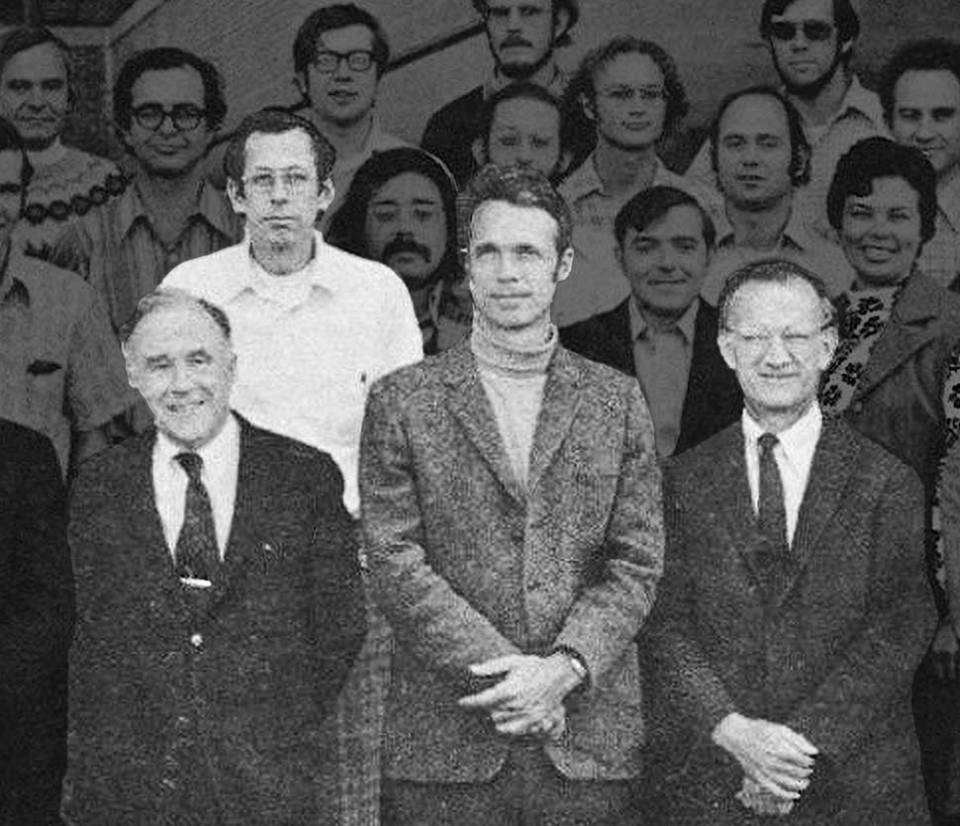 Princeton’s Department of Physics faculty for the 1974-75 academic year included today’s Nobel laureate John Hopfield (center, in turtleneck) with (highlighted, from left) department chair John Wheeler, 2019 laureate Jim Peebles, and 1980 laureate Val Fitch.
Princeton’s Department of Physics faculty for the 1974-75 academic year included today’s Nobel laureate John Hopfield (center, in turtleneck) with (highlighted, from left) department chair John Wheeler, 2019 laureate Jim Peebles, and 1980 laureate Val Fitch.Photo byRobert Matthews, Office of Communications
In 1970, his attention turned to biology. His 1974 paper on “kinetic proofreading” in cells was a major contribution to the world of chemistry.
“Hopfield published influential papers on the theory of electron transfer reactions, the most fundamental reactions in chemistry,” said Gregory Scholes, the William S. Tod Professor of Chemistry. “The ‘Hopfield coefficient,’ signaling the mixing of a molecular and a photon state, carries his name.”
In 1980, his eagerness to use computers to model the nervous system required more hardware than Princeton had at the time, prompting him to cross the country again, this time to join the faculty of Caltech, where he created and chaired the Computational and Neural Systems Program, the first of its kind.
During those years, Hopfield met and mentored then-graduate student Carlos Brody, who is now Princeton’s Wilbur H. Gantz III ’59 Professor of Neuroscience.
“John was a wonderful Ph.D. mentor, who inspired deep thinking in all his students,” Brody said. “He had a way of listening to what we were telling him, pausing to think, and then coming back with a question that got to the very heart of the matter, often seeing the truly important parts, well beyond the day-to-day minutiae, before we ourselves saw them.”
In 1983, Hopfield won the MacArthur “Genius” Award, which funded his research for the next five years. In 1997, he returned to Princeton, where he began recruiting faculty who worked across disciplinary boundaries, like his Bell Labs colleague David Tank, who joined the faculties of physics and molecular biology.
Hopfield’s pitch? “He basically said, ‘Why should you come to Princeton? Because Princeton is unique. It has incredible opportunities available. And if you really want to help build something and develop something new, you should come to Princeton,’” Tank recalled. “And I made my decision that night.”
“Just a few moments with John was enough to give you a discovery,” said Seung. “That’s an experience you don’t have with many people. It means a greatness is exuding from that person.”
In 2001, Hopfield won the Dirac Medal, awarded by the International Center for Theoretical Physics on behalf of UNESCO (the United Nations Educational, Scientific and Cultural Organization) and IAEA (the International Atomic Energy Agency), for “important contributions in an impressively broad spectra of scientific subjects.
‘Inspired by his intellect and thoughtfulness’
Olga Troyanskaya is among Princeton’s preeminent AI researchers and director of the groundbreaking Princeton Precision Health initiative. But when she first met Hopfield, in 2003, it was as a prospective faculty member, interviewing for a job. “I still remember being so inspired by his intellect and thoughtfulness,” she said.
More than two decades later, Troyanskaya, a professor of computer science and the Lewis-Sigler Institute for Integrative Genomics, notes the extraordinary impact of Hopfield’s early research. “His development of the first recurrent neural networks, Hopfield networks, was a pioneering breakthrough both as a computational approach and for understanding the principles of how biological systems function,” she said.
Around that time, Hopfield and Sam Wang co-advised Gayle Wittenberg. They found that biological synapses, like artificial ones, act like little on/off switches, which can make a memory more stable. “Despite giving us the idea, John was characteristically humble and declined co-authorship, basically giving us credit,” said Wang, a professor of neuroscience.
“John loves a good problem,” said Wittenberg, who earned her Ph.D. in molecular biology and neuroscience in 2003. “I remember his 66th birthday. Olly Downs, a fellow grad student, and I brought a cake into the Hopfield Lab. Trying to decide whether to go for the 66 candles, or two number 6’s — ultimately, we put 7 candles on the cake, lighting only the first and the sixth. He was quiet for a couple of minutes as we watched those two candles burn down, and then he broke into laughter on recognizing the binary code. I will never forget the sparkle in his eye when he solved the problem.” (The number 66 is represented in binary as 1000010.)
Wittenberg, who is VP of neuroscience data science and digital health at Johnson & Johnson Innovative Medicine, continued: “When you see John working, or teaching, after a few minutes you do a double take, and realize he has this same demeanor of a person who is ‘at play.’ Understanding how the world works, seeing one of nature’s clever secrets finally revealed, is met with joy. I think each problem shared with a student, in a way, was meant to give them that same feeling.”
“John was always humble about his accomplishments,” said Downs, who earned a Ph.D. at Princeton in 2005 and is now the chief technology and AI officer at Curinos. “When I was a teaching assistant for his class on neural computation, he would teach what was already commonly known as the Hopfield Network, but he called it only ‘associative networks.’”
In 2004, Hopfield became the vice president of the American Physical Society, then assumed the presidency a year later.
In 2008, he retired from teaching, transferring to emeritus status just as the Princeton Neuroscience Initiative was launching under the leadership of Tank and Jonathan Cohen, an M.D./Ph.D. who is a professor of psychology and neuroscience, and Princeton’s Robert Bendheim and Lynn Bendheim Thoman Professor in Neuroscience.
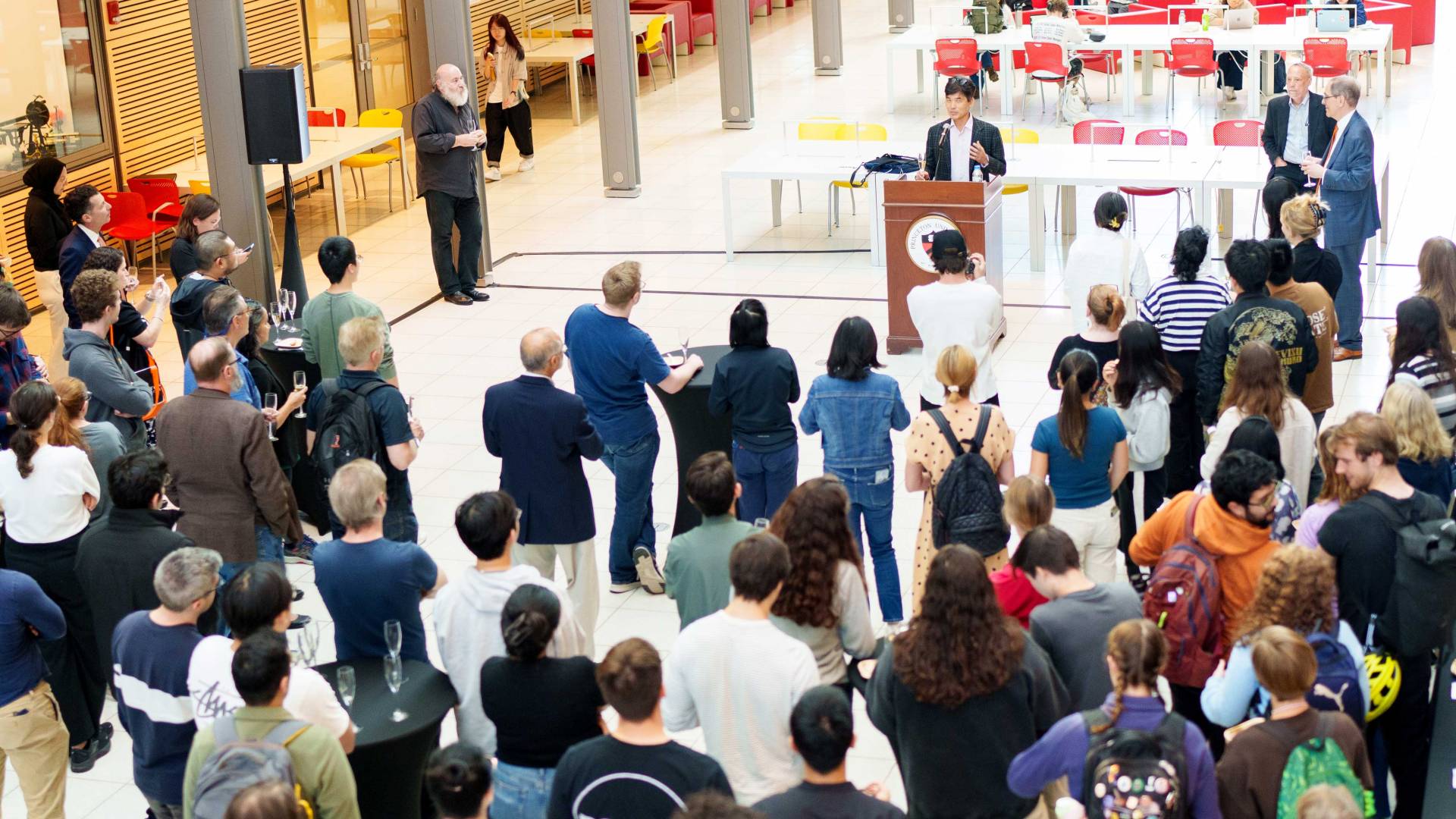 Sebastian Seung, the Anthony B. Evnin Professor in the Princeton Neuroscience Institute and the Department of Computer Science, talks about Hopfield’s influence on generations of Princeton faculty and students during a reception in Frick atrium celebrating the new Nobel laureate.
Sebastian Seung, the Anthony B. Evnin Professor in the Princeton Neuroscience Institute and the Department of Computer Science, talks about Hopfield’s influence on generations of Princeton faculty and students during a reception in Frick atrium celebrating the new Nobel laureate.Photo byMatthew Raspanti, Office of Communications
Celebrating a mentor and friend
Following the campus press conference, the audience was invited to a reception in the Frick atrium, where Eisgruber again greeted the crowd — this time with a Champagne toast — and several of Hopfield’s colleagues gave remarks, including professors Tank, Bialek and Seung. Each scholar called Hopfield an inspiration and mentor.
“Why did I come to Princeton? Because John Hopfield was here too,” said Tank.
Bialek called Hopfield “an incredibly warm and supportive human being.”
“It is a pleasure not only to celebrate the recognition of his work — the recognition really of a whole field – but it’s also wonderful to have the pleasure of recognizing a great friend,” he said.
Seung said Hopfield’s seminal discoveries across multiple disciplines have helped answer profound questions about the universe. “That is the mark of the genius of this man, and why he is so inspirational to all of us.”
Many in the crowd expressed the excitement of being at Princeton when a Nobel laureate was selected.
“I am very inspired,” said Luca Di Carlo, a postdoc from Italy in physics and the Lewis-Sigler Institute. “Research is tough, we may feel unattached from reality — it’s reassuring to be reminded that we are actually making an impact and that our community is making a difference.”
Megan Matter and Christina Preston, both fourth-year graduate students in chemistry, remembered arriving at Princeton in 2021, when MacMillan won his Nobel in chemistry. This year, their adviser, Erin Stache, assistant professor of chemistry, sent a group message to her team early in the morning about Hopfield’s Nobel. “It’s always very exciting,” said Matter, “and it’s great to see machine learning be celebrated.”
Cameron Khan, who earned his undergraduate degree in 2023 and is now pursuing a Ph.D. in chemistry, felt lucky to be on campus for multiple Nobel celebrations in recent years. “It’s very special to be a student here,” Khan said.
Hopfield joins a number of other Princeton faculty and alumni who have been awarded Nobel Prizes. This year’s prize amount is 11 million Swedish kroner, or about $1 million, which the laureates share.
Emily Aronson and Jamie Saxon contributed to this story.
